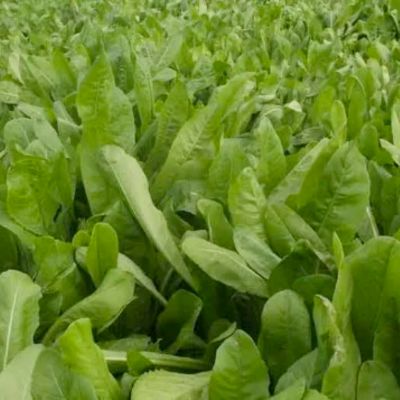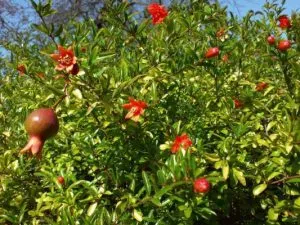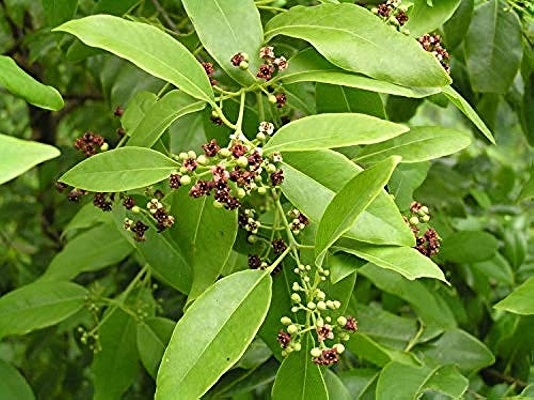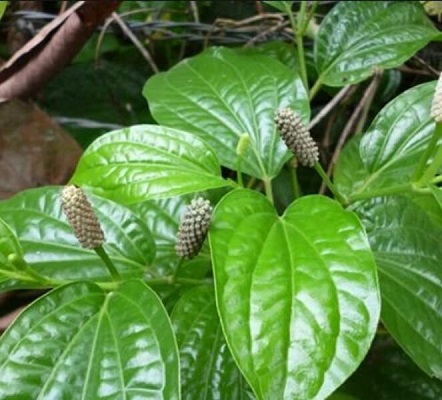On This Page
DADIMA – Punica granatum
Introduction
It is commonly known as Pometranate. The fruits are cut open,hence the plant got the name Dadima. It is also known as Danthabeeja as the seeds are look like teeth. The fruits are somewhat round in shape, so it is known as Vruthaphala. The plant is having full of leaves, hence it is known as Atipatra.
Dr.Gupta’s IAFA has been continuously working on the plantDadima for discovering more medicinal properties the plant. Our experts found out that the plant possessesantimicrobial, antifungal, antimutagenic, anti-inflammatory, antibacterial, antidiarrheal, immune modulatory, antitumor, wound healing, antioxidant, anti-inflammatory anti-cancer and anti-angiogenesis activity. It is used in diseases like acidosis, dysentery, microbial infections, diarrhea, helminth infection, hemorrhage, respiratory complaints, colic, colitis, menorrhagia, headache, acne, piles, allergic dermatitis, oral diseases etc.
Action of Dadima – Punica granatuminAllergies
IAFA has been conducting various studies on Dadima found out the antiallergic and anti-inflammatory actions of the plant. The various chemical constituents present in this plant shows anti-inflammatory activity. Dadima is very useful in skin diseases by its anti-inflammatory and anti-histamine activity.
Vernacular Names
| Sanskrit Name | Dadima |
| Hindi Name | Anar |
| English Name | Pometranate |
| Malayalam Name | Matalam |
| Tamil Name | Madalai |
| Telungu Name | Danimma |
Botanical Name
Punica granatum
Family
Punicaceae
Morphology of Dadima – Punica granatum
- Small tree with dark grey bark
- Leaves- oblong or obovate, narrowed to the short petiole
- Flowers- bright red or yellowish coloured
- Fruit- globose with coriaceous reddish brown rind
- Seeds – teeth like, red or brilliant white colored.
Ayurveda reference of Dadima – Punica granatum

Geographical distribution of Dadima – Punica granatum
It is distributed in Afganistan, Baluchistan and
Iran (Persia) and apparently wild in warm valleys in many parts of the
outer Himalaya also in the hilly tracts of the Punjab and Sind.
It is extensively cultivated in many parts of India.
Phytoconstituents of Dadima – Punica granatum
The phytoconstituents present in the plant Dadima are Punicic acid, Anthocyanins, Glucose, Ascorbic acid, Ellagic acid, Gallic acid, Caffeic acid, Catechin, Quercetin, Rutin, Phenolic Punicalagins,Flavonols, Flavones, Flavonones, Punicalin, Punicafolin, Luteolin, Apgenin,Maslinic acid, Asiatic acid, Ellagitannin etc.
Parts used of Dadima – Punica granatum
- Fruit
- Fruit rind
- Root bark
Dosage of Dadima – Punica granatum
- Fruit powder- 3-6 gms
- Fruit juice – 25- 50 ml
- Decoction – 50 -100 ml
Medicinal Properties of Dadima – Punica granatum
- Trushnanigraha – Relieves thirst
- Dahaghna- Cures burning sensation
- Jwaraghna- Cures fever
- Hrdya- Goods to heart
- Mukhadurgandhanasaka- Cures bad smell of mouth
- Sukrala- Increases sperm count
- Grahi- Absorbent
- Balaprada- Gives body strength

Have A Health Issue?
Consult Online
- Dr. Sahil Gupta (B.A.M.S., M.H.A.)
Ayurvedic Allergy Specialist
CEO & Founder of IAFA®
Home remedies of Dadima – Punica granatum
In Ayurveda the treatment of different kinds of diseases are done by naturally availing non toxic drugs. We are continuously working on these plants to find out its pharmacological actions. IAFA have done so many studies on the plant Dadima and found out that it has wide range of actions. Some of the home remedies are given below.
- Worm infestation (Krumi)- 3 gm of fruit powder is taken along with jiggery for 7 days.
- Diarrhea (Atisara)- 5ml of fruit juice taken along with honey for 3 days.
- Bleeding piles(Raktharsas)-6 gm of fruit powder is taken along with honey for 5 days.
- Cough (Kasa)- 5 gm fruit powder is taken along with honey.
- Menorrhagia(Pradara)- 5 gm of bark powder is taken along with honey.
- Anorexia(Aruchi)- 10 ml of fruit juice is taken along with 1 pinch of saindava lavana for 3 days.
- Hypercholestremia – 20 ml of fruit juice is taken along with 1 tea spoon of honey for 7 days.
- Skin diseases(Tvak roga)- 10 gm of fruit powder and turmeric powder is taken along with honey for 7 days.
Dr. Gupta’s IAFA provides safe, pure and non toxic Ayurvedic medicines. Our treatment protocols are completely based on Ayurvedic principles. According to Ayurveda each and every plants in the world has its own medicinal properties. Samhitas, Ayurvedic texts explains the properties and actions of almost all the plants. We are mainly focus on alleviating allergic disorders by using naturally available herbs which have less to no side effects. We can assure the safety of our customers as we are subjecting our products to various tests.
Reach IAFA for safe herbal remedies for all your ailments!!!
Was this Page Helpful?
Read More Articles
-

Kasini (Cichorium intybus)
Kasini (Cichorium intybus) commonly known as Chicory is a perennial herb, with large…
-
-









